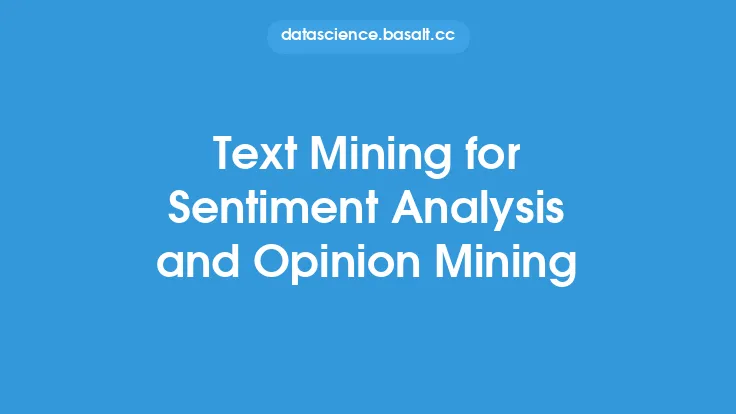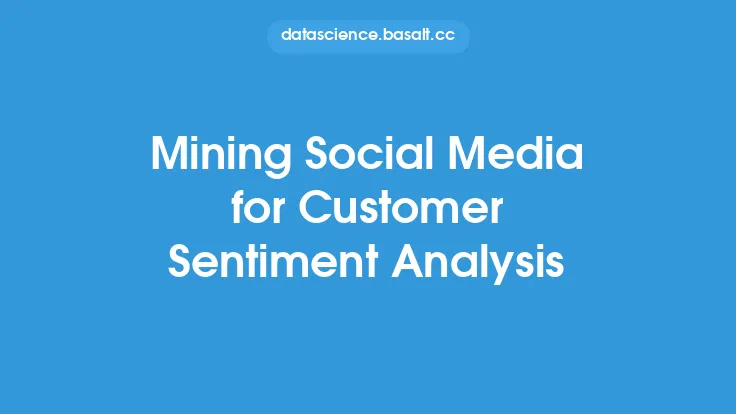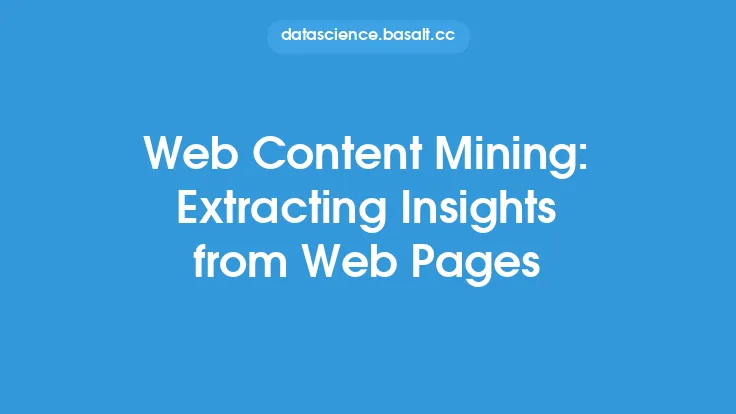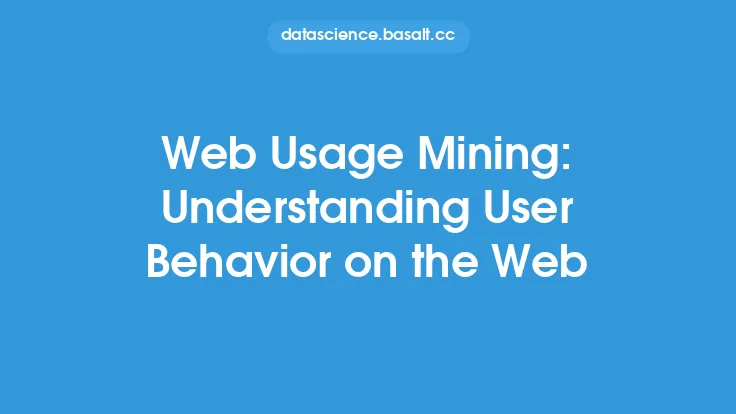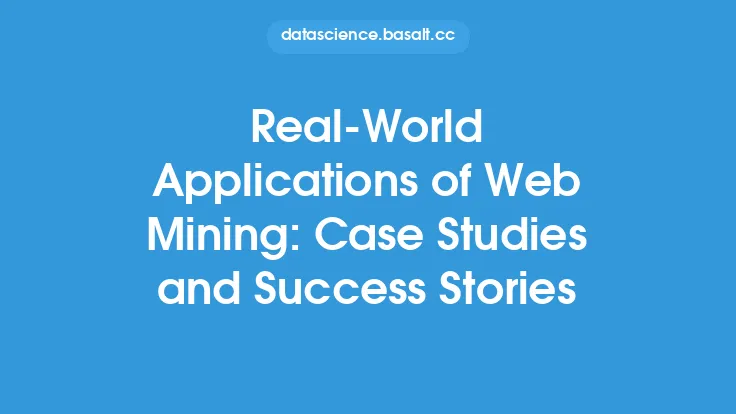The advent of the internet and social media has led to an explosion of online data, with millions of people sharing their thoughts, opinions, and experiences on various platforms. This vast amount of data provides a treasure trove of information for organizations, businesses, and individuals to understand public opinion and sentiment. Web mining for sentiment analysis is a crucial technique that enables the extraction of insights from online data, helping to gauge public sentiment and make informed decisions.
Introduction to Sentiment Analysis
Sentiment analysis is a type of natural language processing (NLP) technique that involves analyzing text data to determine the emotional tone or sentiment behind it. It is a complex task that requires the use of machine learning algorithms, statistical models, and linguistic resources to accurately identify the sentiment expressed in a piece of text. Sentiment analysis can be applied to various types of text data, including social media posts, product reviews, customer feedback, and online forums.
Types of Sentiment Analysis
There are several types of sentiment analysis, including:
- Binary sentiment analysis: This involves classifying text as either positive or negative.
- Multi-class sentiment analysis: This involves classifying text into multiple categories, such as positive, negative, and neutral.
- Regression-based sentiment analysis: This involves predicting a continuous sentiment score, such as a rating from 1 to 5.
- Aspect-based sentiment analysis: This involves identifying the specific aspects or features of a product or service that are being praised or criticized.
Web Mining Techniques for Sentiment Analysis
Web mining involves the use of various techniques to extract insights from online data. For sentiment analysis, the following web mining techniques are commonly used:
- Text preprocessing: This involves cleaning and normalizing the text data to remove noise, punctuation, and special characters.
- Tokenization: This involves breaking down the text into individual words or tokens.
- Part-of-speech tagging: This involves identifying the grammatical category of each word, such as noun, verb, or adjective.
- Named entity recognition: This involves identifying named entities, such as people, places, and organizations.
- Machine learning algorithms: This involves using algorithms, such as support vector machines, random forests, and neural networks, to classify the text data into different sentiment categories.
Challenges in Web Mining for Sentiment Analysis
Web mining for sentiment analysis poses several challenges, including:
- Noisy data: Online data can be noisy, with spelling mistakes, grammatical errors, and irrelevant information.
- Contextual understanding: Sentiment analysis requires a deep understanding of the context in which the text is being used.
- Sarcasm and irony: Sarcasm and irony can be difficult to detect, as they often involve a mismatch between the literal meaning of the words and the intended meaning.
- Cultural and linguistic differences: Sentiment analysis can be culturally and linguistically sensitive, with different cultures and languages expressing sentiment in different ways.
Applications of Web Mining for Sentiment Analysis
Web mining for sentiment analysis has a wide range of applications, including:
- Customer service: Sentiment analysis can be used to monitor customer feedback and improve customer service.
- Marketing and advertising: Sentiment analysis can be used to gauge the effectiveness of marketing campaigns and identify areas for improvement.
- Product development: Sentiment analysis can be used to identify product features and aspects that are being praised or criticized.
- Public opinion monitoring: Sentiment analysis can be used to monitor public opinion on various topics, including politics, social issues, and current events.
Tools and Techniques for Web Mining for Sentiment Analysis
There are several tools and techniques available for web mining for sentiment analysis, including:
- Natural language processing libraries: Such as NLTK, spaCy, and Stanford CoreNLP.
- Machine learning libraries: Such as scikit-learn, TensorFlow, and PyTorch.
- Text analysis software: Such as SAS Text Miner, IBM SPSS Text Analytics, and Lexalytics.
- Cloud-based services: Such as Google Cloud Natural Language, Amazon Comprehend, and Microsoft Azure Text Analytics.
Future Directions
The field of web mining for sentiment analysis is rapidly evolving, with new techniques and tools being developed to improve the accuracy and efficiency of sentiment analysis. Some future directions include:
- Deep learning techniques: Such as convolutional neural networks and recurrent neural networks.
- Transfer learning: Using pre-trained models to improve the accuracy of sentiment analysis.
- Multimodal sentiment analysis: Analyzing sentiment from multiple sources, including text, images, and videos.
- Explainable sentiment analysis: Providing insights into the decision-making process of sentiment analysis models.
